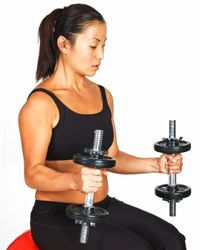Joints are the places in our bodies where bones meet. They roll, glide, rotate or bend like a simple hinge to let you run, jump and do the chicken dance. Joints come in different sizes, shapes and varieties, but all of them are susceptible to wear and tear, damage and arthritis.
Almost 20 percent of people in the United States have arthritis [source: Harvard Health Publications]. Whether you're in the afflicted minority or the lucky majority, it's important to take care of your body and protect your joints to maximize their use, mobility and function for as long as you can. But it's not just about being able to coax your joints into action in the years to come -- preventing or limiting the amount of pain or discomfort you feel today is a plus, too.
Advertisement
Over time, even normal, healthy joints deteriorate, but you can minimize the effects by following 10 basic steps. And if your joints are already in pain, the tips in this article will alleviate your pain and make life a little easier.






